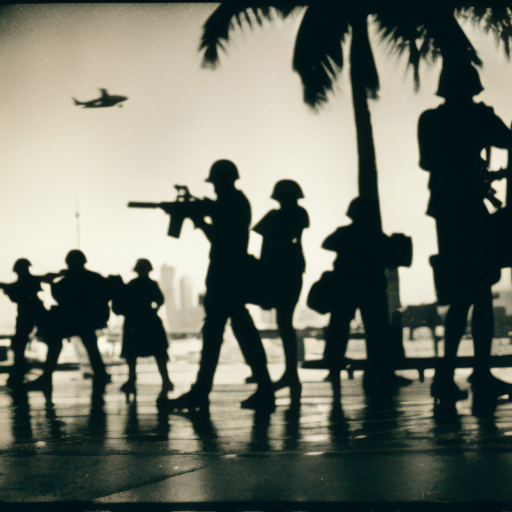Summary:
The United States invasion of Panama, which occurred from December 20, 1989, to January 31, 1990, was a military operation aimed at removing Panamanian dictator Manuel Noriega from power. The invasion was prompted by Noriega’s involvement in drug trafficking and his refusal to step down after losing the 1989 Panamanian presidential election. The operation, known as “Operation Just Cause,” involved over 27,000 U.S. troops and resulted in the capture of Noriega, the restoration of democracy in Panama, and the establishment of a new government.
Background:
Manuel Noriega, a former military officer, rose to power in Panama in the 1980s. He initially cooperated with the United States, allowing the CIA to use Panama as a base for covert operations in Central America. However, Noriega’s relationship with the U.S. deteriorated as evidence of his involvement in drug trafficking and money laundering emerged. In 1988, he was indicted in the United States on drug-related charges.
Events Leading to the Invasion:
In May 1989, Panama held presidential elections, which were widely seen as fraudulent. Guillermo Endara, the opposition candidate, was declared the winner, but Noriega refused to recognize the results and maintained his grip on power. The United States, along with other countries, imposed economic sanctions on Panama in an attempt to pressure Noriega to step down. Negotiations between the U.S. and Panama failed, leading to the decision to remove Noriega by force.
Operation Just Cause:
On December 20, 1989, the United States launched Operation Just Cause. The initial phase involved a massive aerial bombardment of strategic targets in Panama City, including military installations, Noriega’s headquarters, and the Defense Forces’ barracks. Simultaneously, U.S. troops began a ground assault, targeting key locations and engaging in combat with Panamanian forces.
Outcome and Aftermath:
The invasion resulted in the capture of Manuel Noriega, who sought refuge in the Vatican embassy but surrendered on January 3, 1990, after the U.S. military played loud rock music outside the embassy to disrupt his sleep. Noriega was subsequently extradited to the United States, where he faced trial and was convicted on drug trafficking charges.
The invasion also led to the deaths of hundreds, if not thousands, of Panamanian civilians. Human rights organizations criticized the U.S. military for its use of excessive force and disregard for civilian casualties. The United States justified the invasion as necessary to protect American lives and interests, as well as to restore democracy in Panama.
Following the invasion, a new government was established in Panama, led by Guillermo Endara, who had been declared the winner of the 1989 elections. The United States maintained a military presence in Panama through the Panama Canal Zone until December 31, 1999, when control of the canal was transferred to Panama.
The United States invasion of Panama had significant geopolitical implications. It demonstrated the U.S. commitment to combating drug trafficking and its willingness to use military force to achieve its objectives. The invasion also strained relations between the United States and other Latin American countries, who criticized the intervention as a violation of Panamanian sovereignty.
In conclusion, the United States invasion of Panama in 1989 was a military operation aimed at removing Manuel Noriega from power. The invasion resulted in the capture of Noriega, the restoration of democracy in Panama, and the establishment of a new government. However, it also led to civilian casualties and strained relations between the United States and other Latin American countries.












